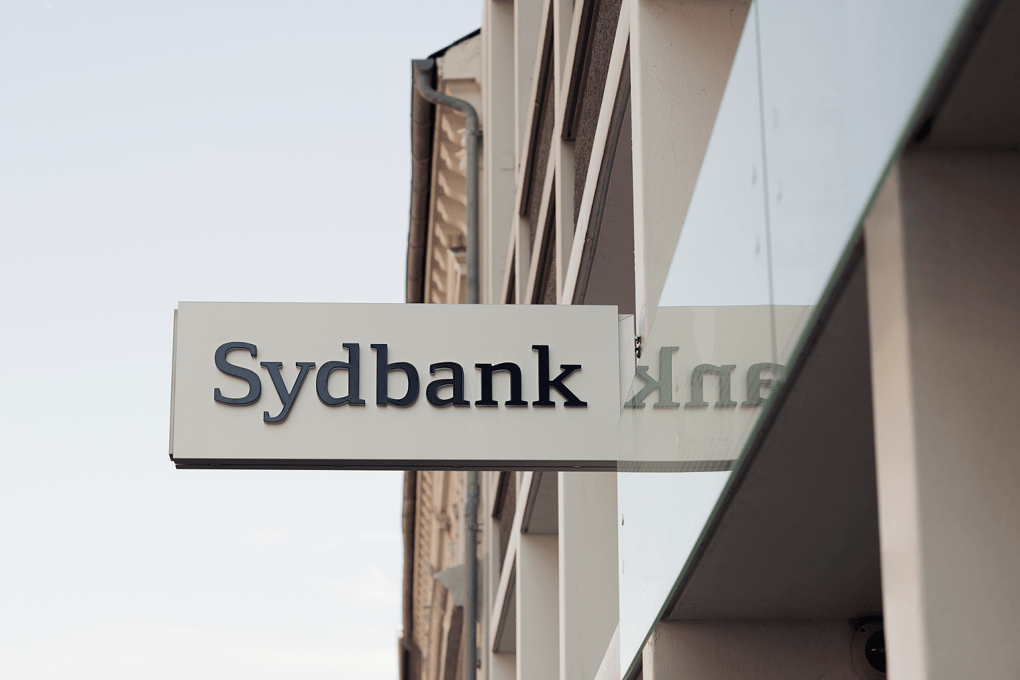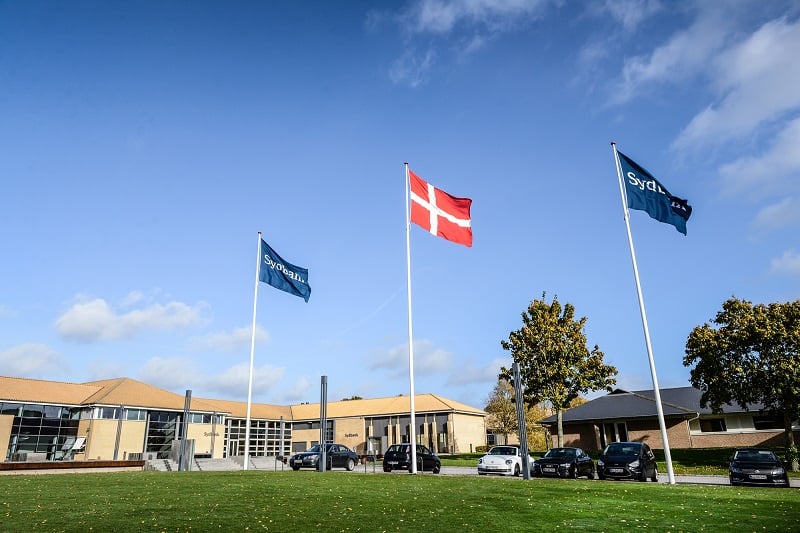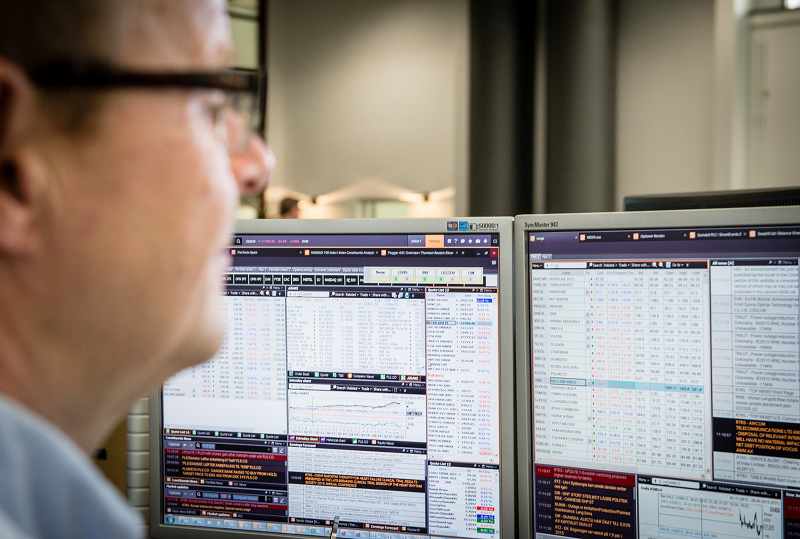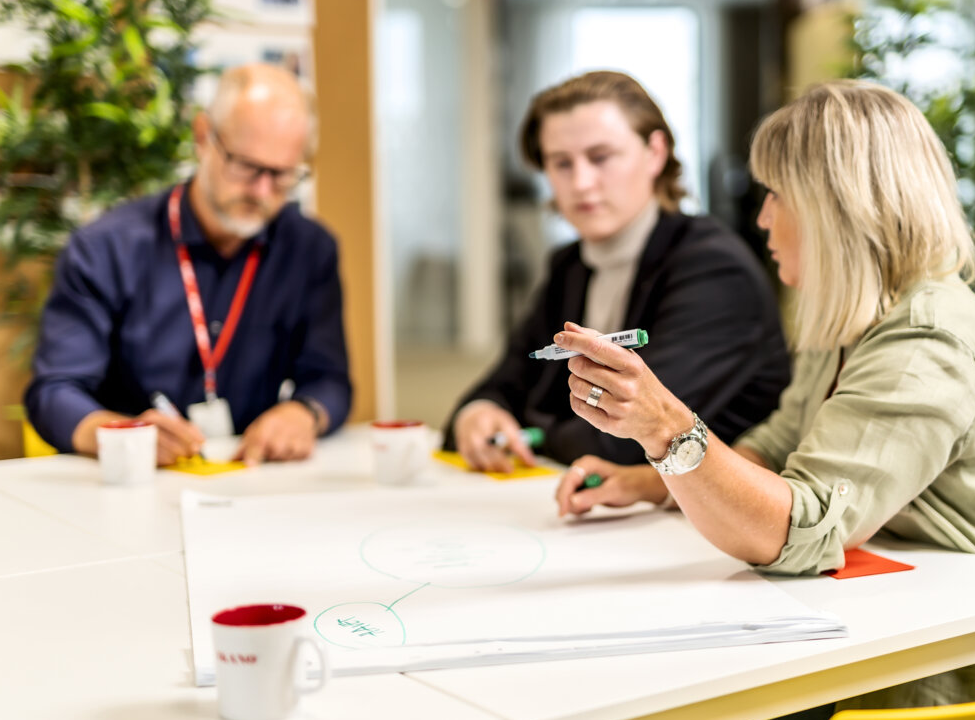
Region:Europe
Industry:Banking and Financial Services
Client:Sydbank
Sydbank opens the door to digital transformation

~850
hours of work saved weekly
100+
UiPath robots
15%
automated tasks in Sydbank's Operations
Client Overview
Operating in Denmark and northern Germany, Sydbank offers a wide range of financial services to individuals and businesses. As a mid-sized bank, it has the scale customers find reassuring, yet is small enough to offer a personal approach. It specializes in helping SMEs–the backbone of most economies.
Digital transformation. It’s a phrase most will be familiar with. But to many, it’s a little vague. A couple of buzz words that dance around in meetings or appear in presentations. It’s hard to grasp what it means in practice if you don’t work in IT. Especially when it can change dramatically from business to business.
This is a challenge Sydbank was keen to overcome. Because it realised that to attain real digital transformation, people not only need to understand it, but they need to live and breathe it. Working digitally needs to become second nature, rather than something the IT team helps with.

And the bank saw automation as the perfect way to achieve this aim. This was for two reasons. Firstly, because automation is a simple way of shifting a manual task to a digital one – by creating a software robot to do something rather than a human. Secondly, because it can be done by employees themselves with simple low- and no-code software, such as that offered by UiPath.
The journey to digital transformation begins
The journey started three years ago when Kristian Mikkelsen, joined as a senior VP in operations. He established a automation team and began creating automations using BPM and RPA tools. It was a successful start, but Mikkelsen was keen to do more. “It had some traction, but we wanted to get it into the hands of the business,” he says. Only by doing so would Sydbank be able to develop its, “Digital maturity,” as Mikkelsen puts it.
By this he means changing the way people think about software. From a position where they see it as something to be used by a human or presenting information to a user, to a position where they can see software running everything, orchestrated by humans.

In late 2022, Mikkelsen was promoted to become head of Digital Banking. At the same time, his colleague, Jess Buskov Lund, was appointed as senior VP for data and business enablement, working alongside Mikkelsen in his team. Lund’s role was to scale the use of low- and no-code software, including automation, building on the foundations set by Mikkelsen’s former team.
Lund and his team are now working on developing tools, best-practice guides and advice that help employees within the business discover and embrace automation.
When we started, we offered all staff in our Operations area a UiPath training course to arm them with the skills they’d need to identify potential candidates and get more familiar with automation possibilities. We also shared automation success stories, which sparked interest.
Jess Buskov Lund • Senior VP for Data and Business Enablement at Sydbank
The first robots
The initial automations were what Mikkelsen calls low-hanging-fruit. The processes that were easy to automate and offered instant and measurable results. One managed administration for community bank accounts.
“In Denmark, we have lots of community groups, such as local football clubs, landowner associations and so on” Mikkelsen explains. “They need basic banking products to help manage donations, membership fees and buying kits. Each has a board, with a chairperson, cashier who often changes. Each time this happens, a whole set of checks is required to ensure the bank meets anti-money-laundering rules and new power of attorney must be created or changed.”
Handling each change manually could take up to four months, limiting the ability of the community group to make payments or manage their accounts. The process was complicated and as a result, the risk of errors was high. A software robot was introduced, and the checks could be made over night. It had a huge impact on customer experience.
In implementing this automation, Mikkelsen and Lund realized employees needed to start thinking about processes differently. They needed to improve workflows to enable digitalization. In the case of the community group, it meant asking customers to submit details in a structured format. They needed a name, driving licence number and other data in a simple, regular format, submitted via an interface rather than over the phone, or in an unstructured format such as e-mail or from internal CRM systems.
To make automation work, you need really good processes. To move ahead, we implemented business process management tools to improve our workflows. With this in place, the number of software robots accelerated.
Kristian Mikkelsen • Head of Digital Banking at Sydbank
The bank now has 100 automations across the business, which are helping people think differently about their work. For example, in autumn 2022 there were plans to launch a new product. The team responsible for it asked developers in the IT department how long it'd take to build the required technology. “The answer was 18 months,” says Lund with a smile.
“The team needed to launch in a month,” he adds. “So, they used low- and no-code automation to build a simple product, which is now selling well. In time, if it needs development, we can do that.”
The impact of this and other software robots has been clear. About 15 percent of the bank’s operations have been automated, leading to more than +800 hours saved across Sydbank every week.
The door to digitalization is open
But more importantly, automation is making a bigger change within the business. It’s allowing people to think about digital ways of working. “It’s giving people a new perspective and capability,” Mikkelsen continues.
“In the past, if a team got a new assignment, they would think about how many people it would need to complete and how long it would take. Now they consider how the process can be built for automation. What structured data is needed, how can it be delivered and whether an API might be possible in the future.”
To explain more, an API is a piece of bridging software that allows one application to talk to another. Whereas automation sits on the front end of a system, operating it like a human would, an API sits on the back end, linking the applications together, allowing data to flow between the two.
This new way of thinking illustrates a huge shift. Not just in operational efficiency, but in becoming a digitally transformed business. People are no longer thinking about how they can do a task, but how the task can be done for them with the right software.
Encouraging citizen developers
When asked if there was any resistance to the introduction of automation, Mikkelsen quickly says, “Of course. But also, a lot of curiosity. People were keen to see how it might work.” The bank now has 15 citizen developers throughout the business.
These are employees who can build automations themselves for their own use or those around them. They’re not members of the IT team but sit within the business and often know exactly how automations need to be built to ensure the best processes, because they’re closest to them.

Mikkelsen and Lund expect the number of citizen developers to grow in the coming years as more people become wise to the power of automation and the difference it can make to their working lives. In fact, there’ll be a growing demand for automation from new generations.
“People joining us from school or university expect to use modern technologies,” enthuses Mikkelsen. “They’re going to be demanding automation software and we need to be ready for that. We’re preparing the business for the workforce of the future.” A workforce that blends the ingenuity and creativity of humans with the dogged determination of automation to complete tasks and processes in the most efficient way.
Plans for the future
Having made such impressive progress, Mikkelsen says, “We’ve found a good model. We have the right tools and have changed the way people think about the way they work. We plan to see how the technology develops and harness new capabilities.”
“Thanks to the progress we’ve made, we might replace some automations with APIs. It’s all about using the right technology for the right job. Sometimes it will be software robots and other times, APIs. For us, the bigger goal is to become digitally transformed.”

And Sydbank is certainly achieving that. With every software robot it builds, it also creates new skills and digital understanding among its workforce. In short, people are living and breathing digital transformation. They’re no longer waiting for the IT team to enforce something upon them; they’re changing the way they work forever.
When asked what advice Mikkelsen and Lund would give to others working towards digital transformation, they agree on three key things. “Get started,” Mikkelsen says with determination. “It’s important to think big but start small. So, just get going.”
Secondly, You need a way to get users on board. Involve people as much as you can and don’t centralize automation too much. It needs to be part of the business. Finally, don’t see automation as an end in itself. It’s transformative and can make businesses far more efficient. But it’s just part of the journey towards true digital transformation.
Jess Buskov Lund • Senior VP for Data and Business Enablement at Sydbank
Which is a good point to finish on. Because knowing what makes a digital business can be difficult. But Sydbank is achieving it by getting their own people to lead the charge and define it themselves, using automation as the starting point.
Related case studies
Ready for your own case study?
Speak to our team of knowledgeable experts and learn how you can benefit from agentic automation.






